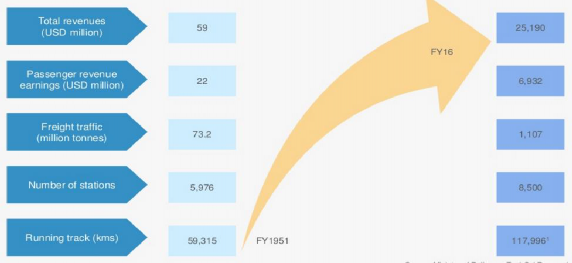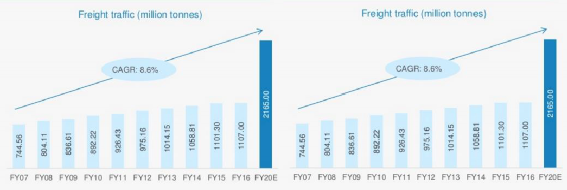4. Railways
The Indian Railways had a modest beginning in 1853 when the first train journeyed from Mumbai to Thane, covering a distance of 34 km. Today, Indian Railways is the world's eighth biggest employer and had 1.331 million employees at the end of 2015-16. In 2015–2016 Indian Railways had revenues of US$26 billion, which consists of US$17 billion freight earnings and US$6.9 billion passengers’ earnings. It had operating ratio of 90.5% in 2015-16. As on the end of 2015-16, Indian Railways’ rolling stock comprised over 251,256 Freight Wagons, 70,241 Passenger Coaches and 11,122 Locomotives (39 steam, 5,869 diesel and 5214 electric locomotives).




The national railway network is divided into 17 zones, which are further subdivided into divisions. There are a total of 68 divisions. There are thirteen undertakings under the control of the Ministry of Railways.
